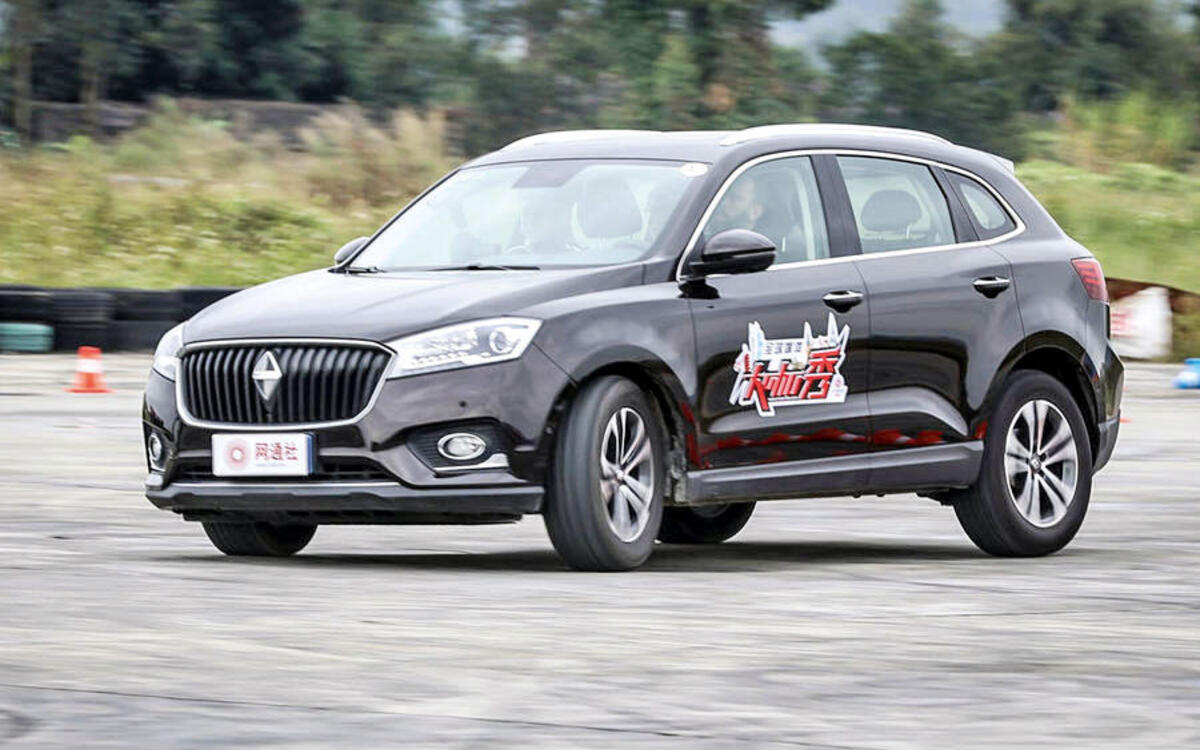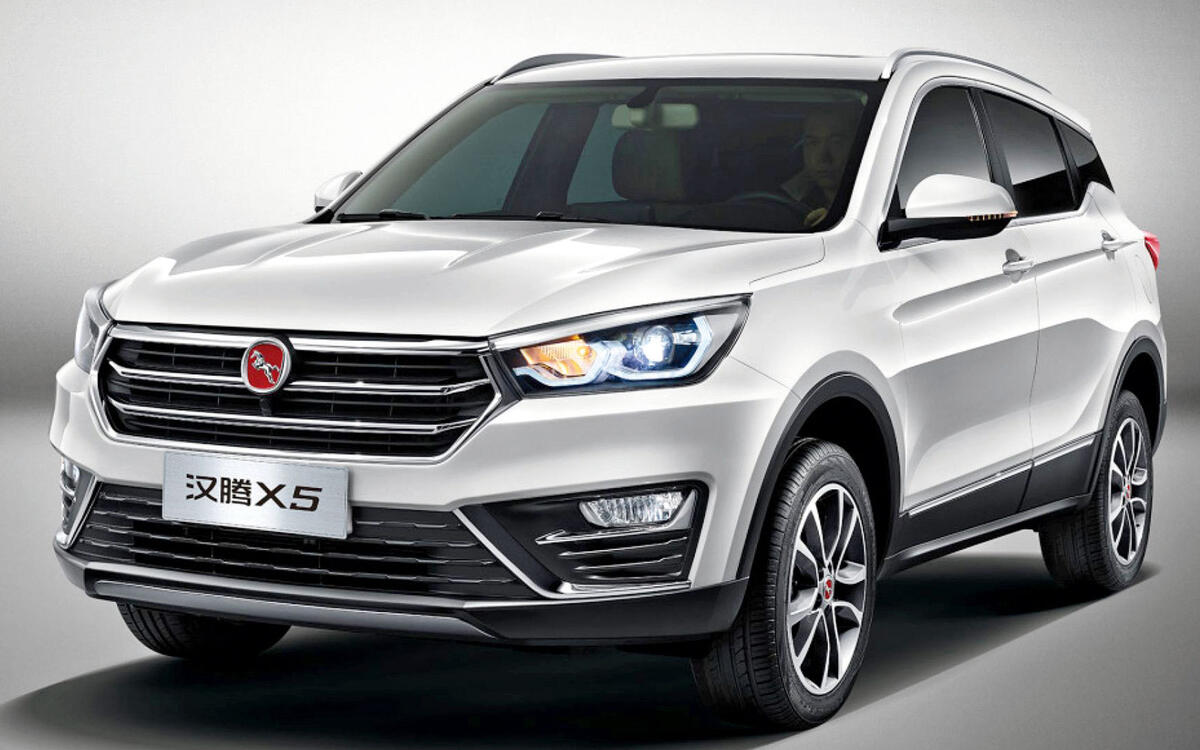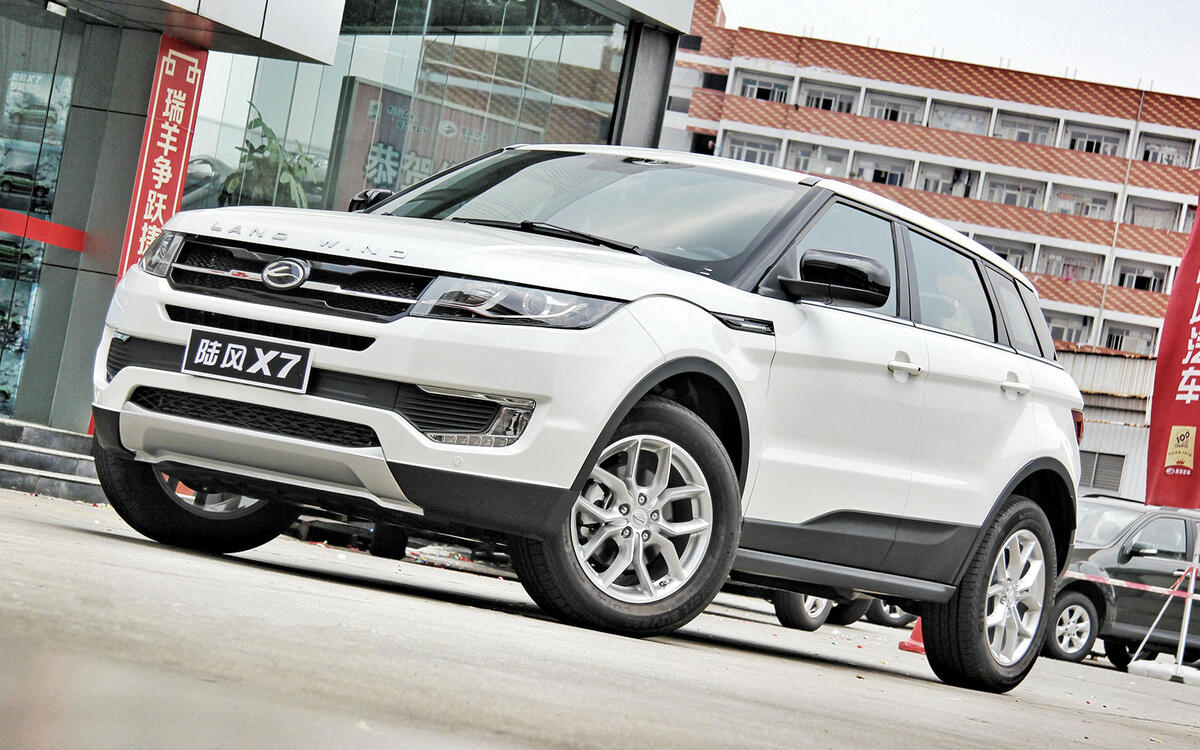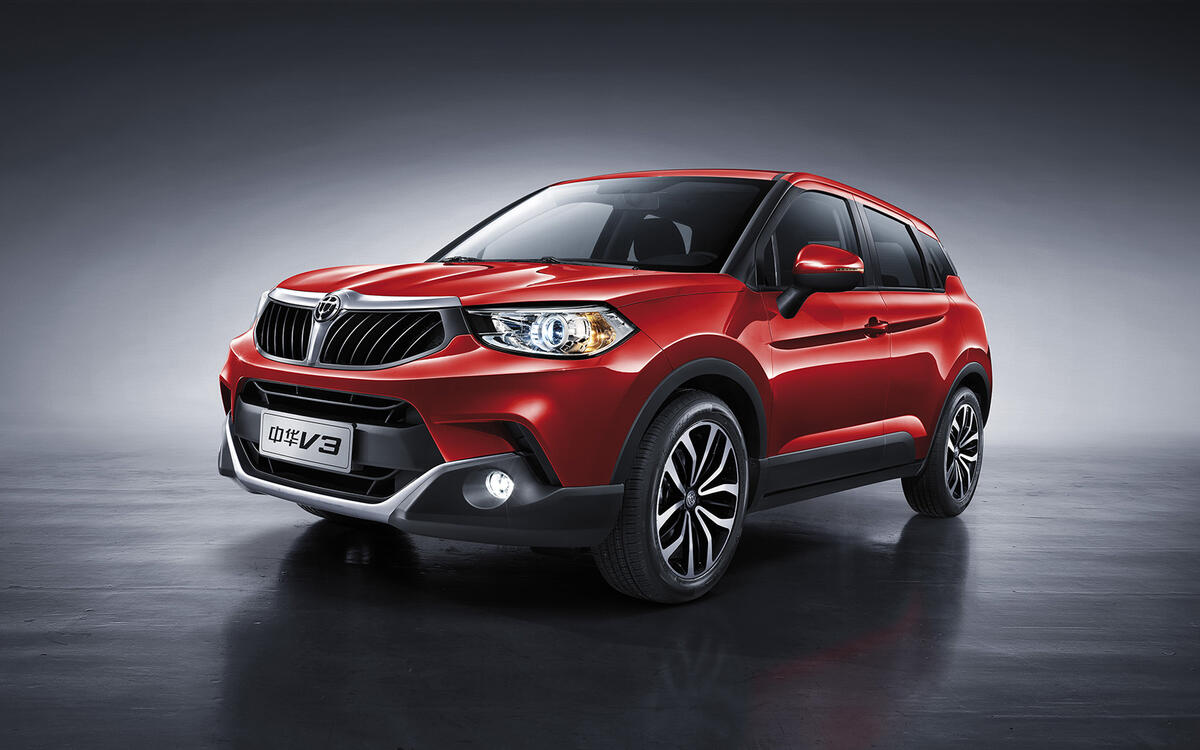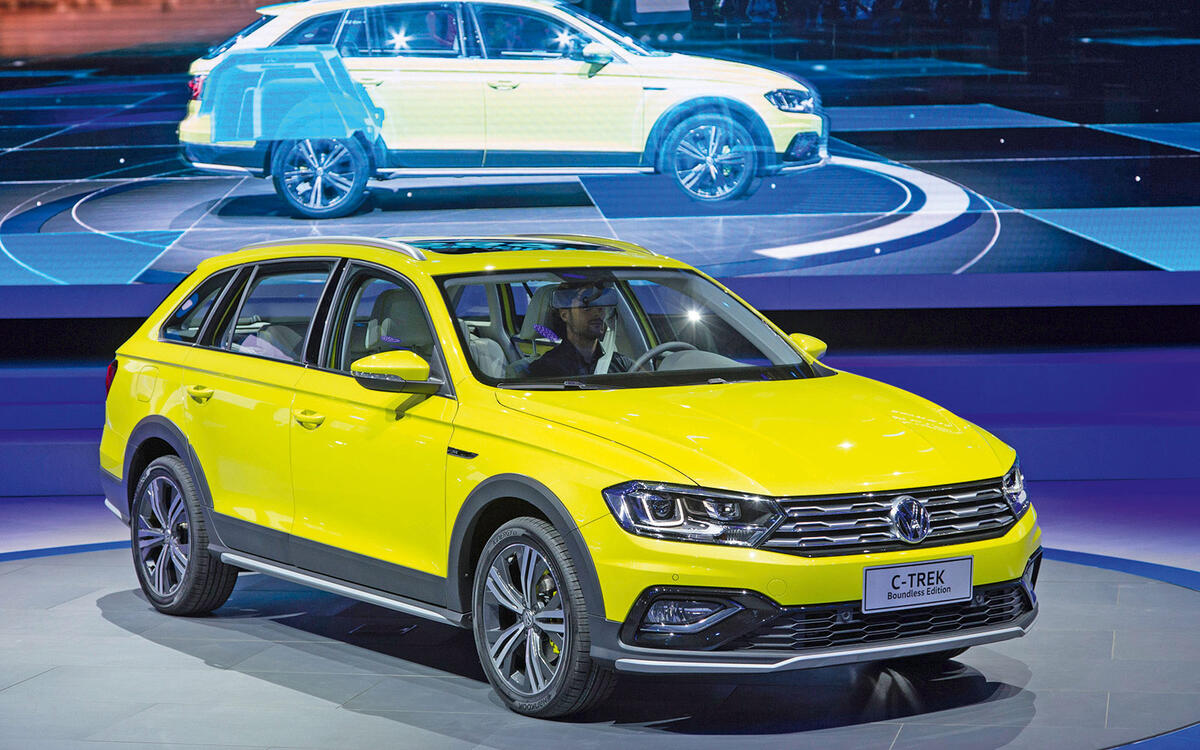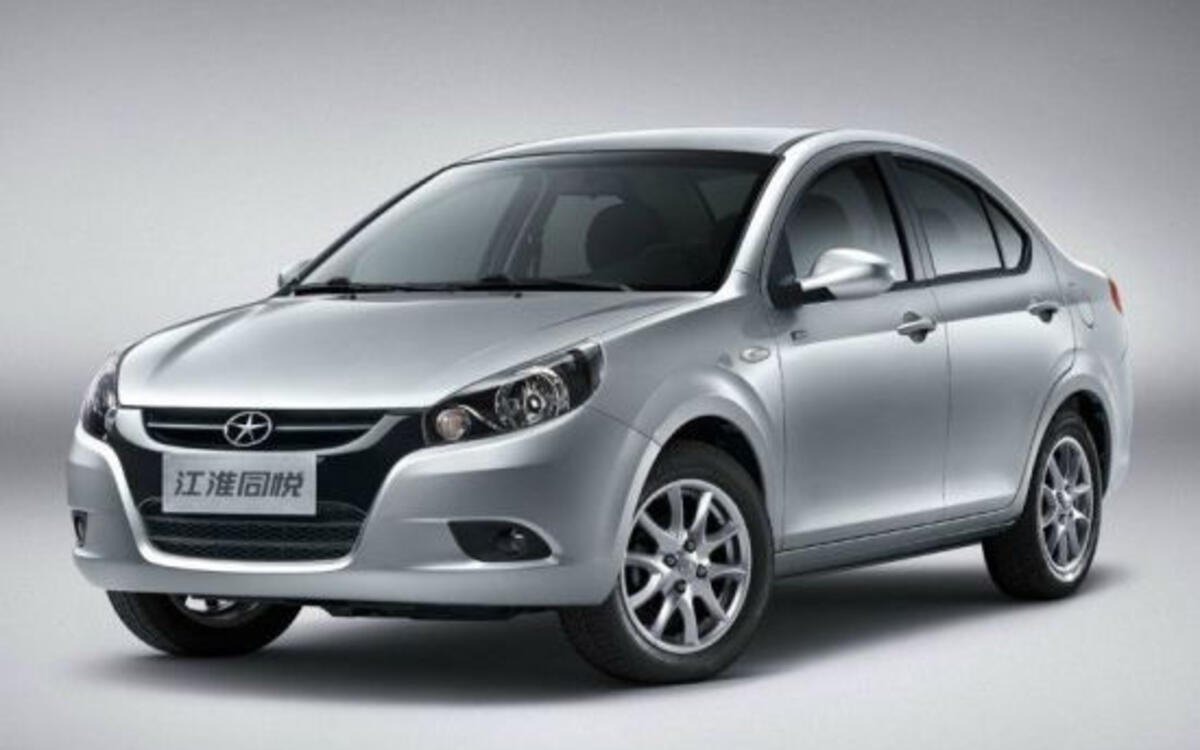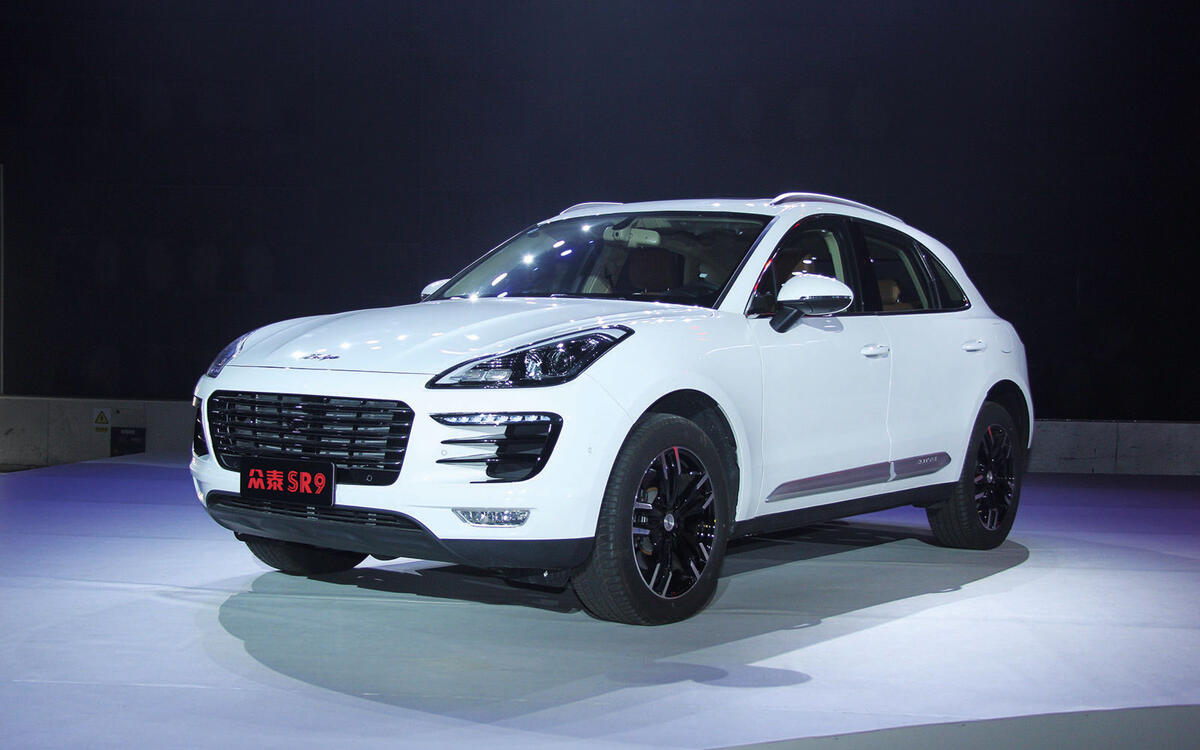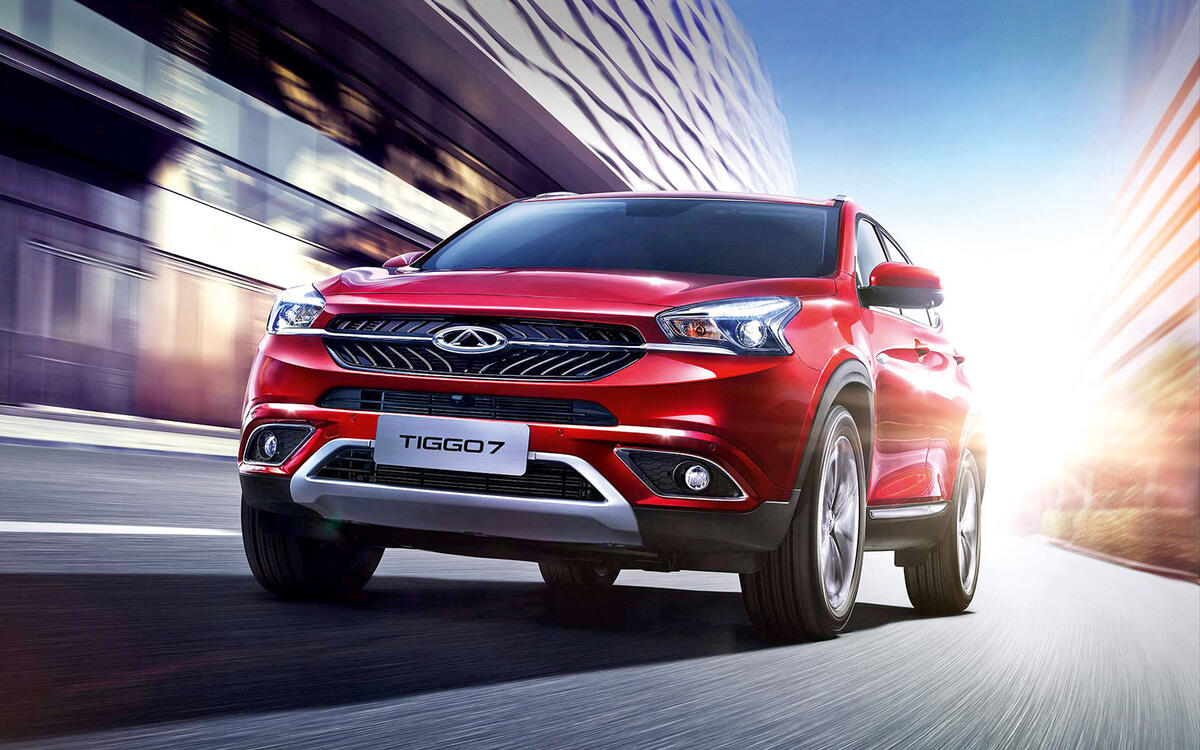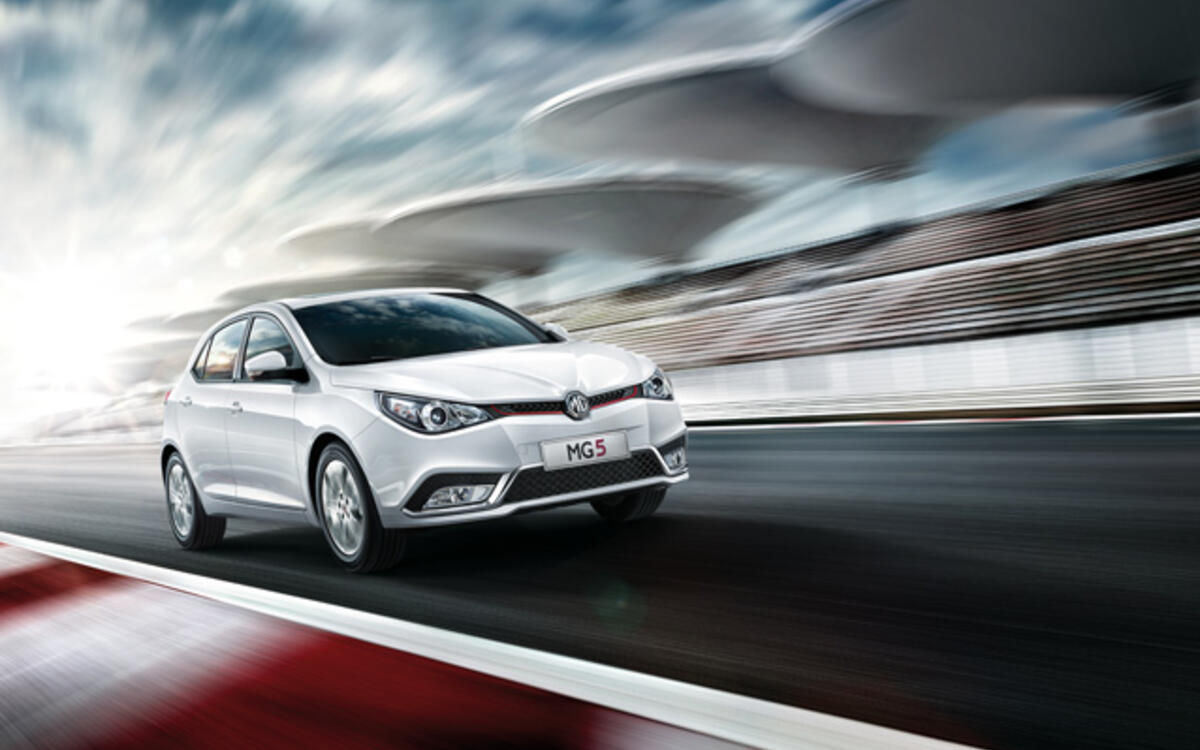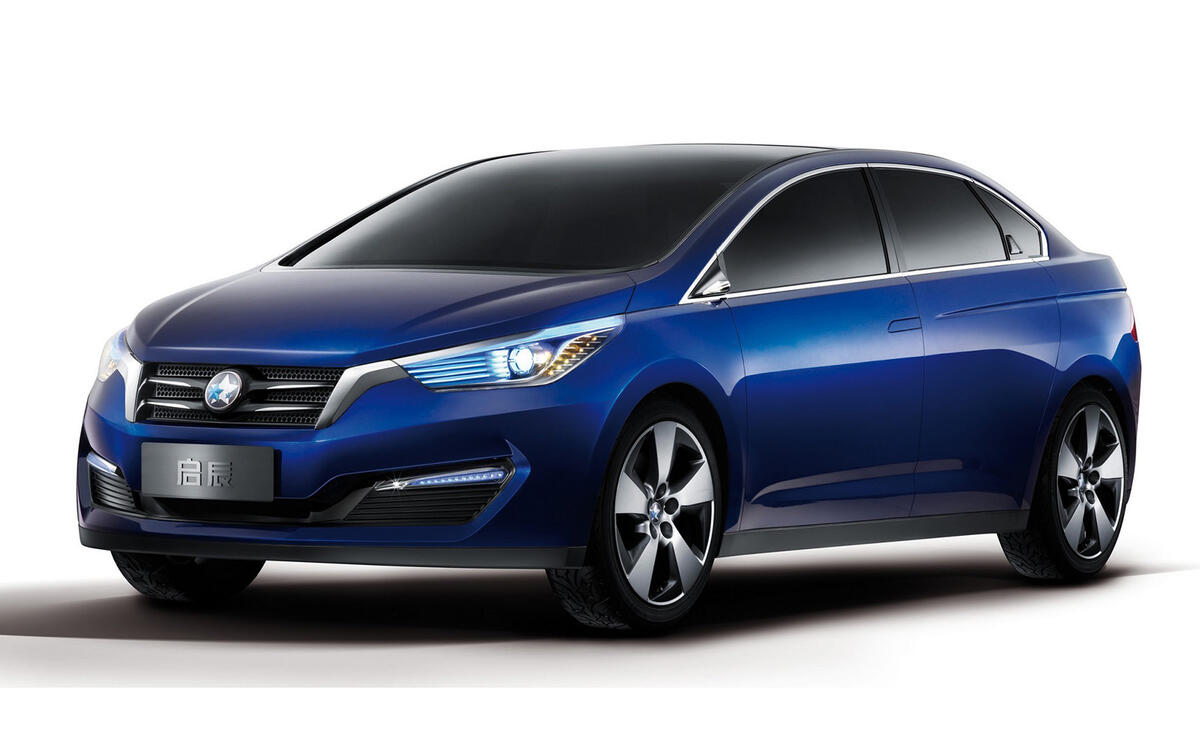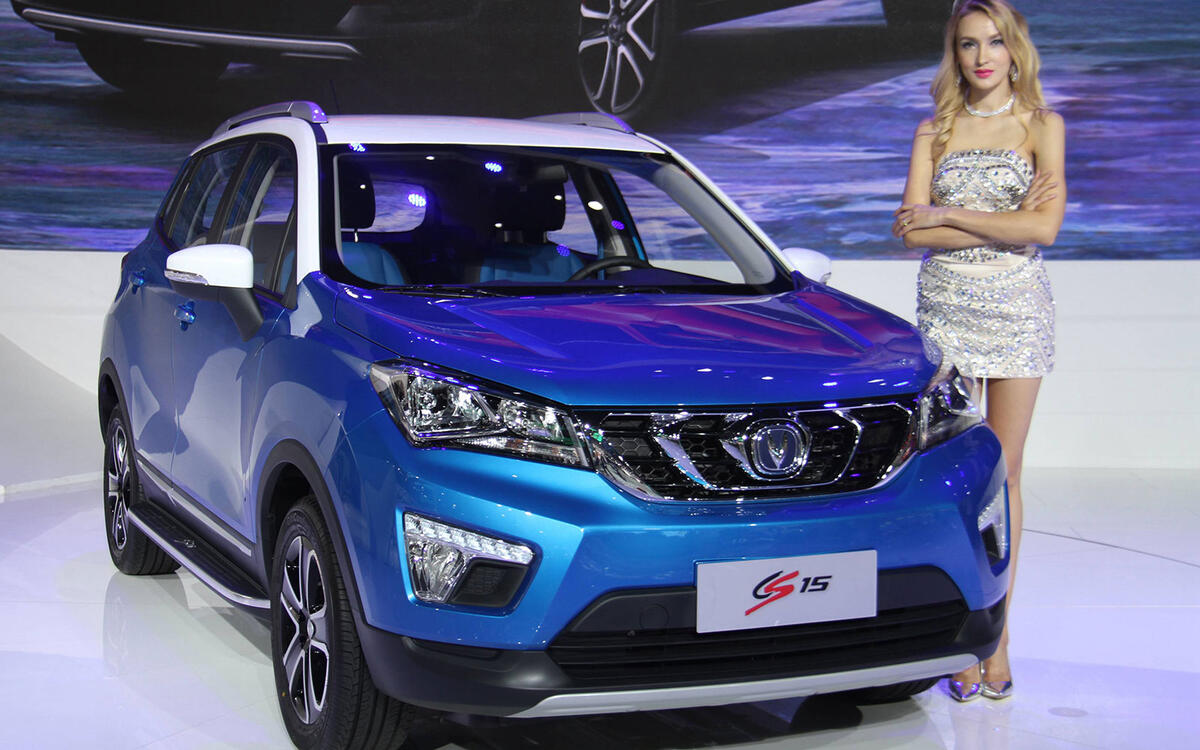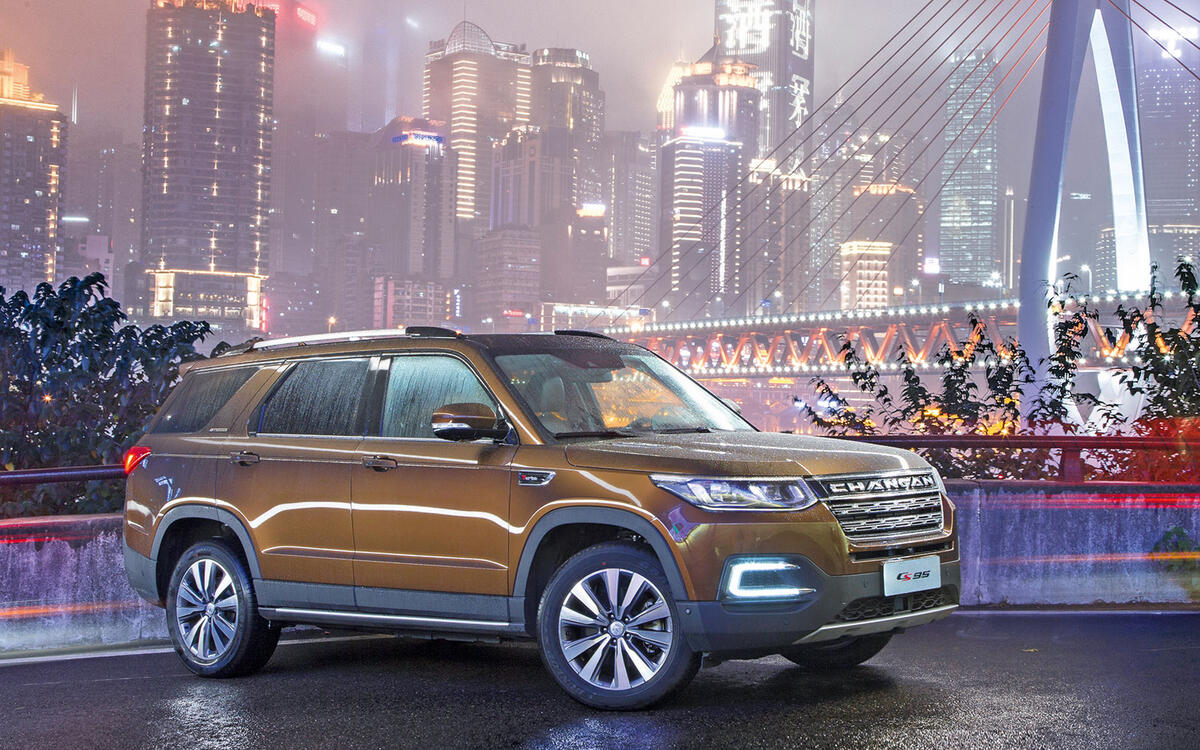 Slide of
Slide of
China is the world’s largest car market, one that expands with new manufacturers, models and brands almost by the day.
The 2018 Beijing motor show that kicked off this week is a reminder of the amazing progress of the country’s industry in recent years – and the very real possibility that many people outside China will be driving cars built there in the future. What is clear is that some of these brands will become household names in the West - but which ones? Here’s our guide to the brands and cars coming to you soon. (Pictured: 2017 Baojun 510)
 Slide of
Slide of
18: Great Wall Motors
Established: 1984
Based: Baoding, Hebei
Brand 2017 China sales: 11,652 – 0.05% market share (2016: 30,831, 0.13%)
Great Wall Motors, named after the Great Wall of China, started out as a commercial vehicle manufacturer. Great Wall became known for launching models with flamboyant names, including the Coolbear, Gwerpi and Florid.
In recent years, it has established itself as China’s largest producer of SUVs through its Haval sub-brand. The success of Haval led to a decision by Great Wall Motors management to add a further sub-brand to its portfolio in 2017 in the form of WEY (pictured: 2017 XEV concept), which aims to compete with European upmarket brands with an extended range of SUVs.
It is also in talks with BMW for the establishment of a joint venture to build Minis for sales in China.
 Slide of
Slide of
17: Borgward Group
Established: 2008
Based: Stuttgart, Germany
Brand 2017 China sales: 44,380 – 0.18% market share (2016: 30,015, 0.13%)
After filing for bankruptcy in 1963 and laying dormant for over five decades, Borgward was resurrected in a deal between the grandson of its founder Carl Borgward and Beiqi Foton Motor, a subsidiary of BAIC, in 2015 with the unveiling of the BX7 SUV (pictured).
The old German car maker has also announced plans to return to its original home city of Bremen with the establishment of a new assembly plant, which scheduled to open during the second half of 2018.
Its design boss is ex-BMW and Mini designer Anders Warming, who stamped his authority on the resurrected German brand with the unveiling of the modern day Isabella concept at the 2017 Frankfurt motor show.
 Slide of
Slide of
16: Hanteng Automobile
Established: 2013
Based: Shangrao, Jiangxi
Brand 2017 China sales: 62,020 – 0.26% market share (2016: 16,117, 0.07%)
As with many newly formed Chinese car makers, Hanteng plans to establish a wide range of SUVs, including PHEV and pure electric models. Its stated goal upon launch was the establishment of five different model lines on three platforms, including four SUVs and one MPV. Hanteng Auto’s first production car, the X7, was launched in 2016. It was joined by the smaller X5 (pictured) in 2017, and sales are growing sharply.
 Slide of
Slide of
15: Jiangling Motors Corporation
Established: 1968
Based: Nanchang, Jianqxi
Brand 2017 China sales: 65,501 – 0.24% market share (2016: 41,639, 0.17%)
Jiangling Motors Corporation (JMC) started as an offshoot of the Nanchang Motors Repair Factory, which specialised in truck repairs. Its initial business activities were based around the production of light trucks under licence from Isuzu, which evolved into a full joint venture.
A subsequent joint venture signed with Ford, which today owns a 32% stake in JMC, also saw it produce the Ford Transit for sale in China from 1995 – an operation that continues to this day.
In 2005, JMC founded Jiangling Motor Holding in partnership with Ford and Changan and subsequently established the controversial Landwind brand, best known for its Range Rover Evoque clone, the 2015 X7 (pictured).
 Slide of
Slide of
14: Brilliance Automobile Group
Established: 1992
Based: Shenyang, Liaoning
Brand 2017 China sales: 101,317– 0.42% market share (2016: 162,147, 0.69%)
The roots of the Brilliance Auto Group can be traced to the Shenyang Auto Works, a car repair workshop established in 1958. It originally produced mini buses under the Jinbei brand using technology from Toyota.
Today, it produces a wide range of models under the Brilliance, Jinbei and Huasong brands. A joint venture with BMW established in 2003 also saw it produce the 1-series saloon, 2-series ActiveTourer, 3-series long wheelbase saloon, 5-series long wheelbase saloon and X1 long wheelbase for sale exclusively in the Chinese market. Renault will also provide technology for some of Brilliance’s future models. (Pictured: 2018 Brilliance V3)
 Slide of
Slide of
13: Lifan Motors
Established: 1992
Based: Chongqing
Brand 2017 China sales: 108,234 – 0.45% market share (2016: 105,659, 0.45%)
The origins of Lifan Motors can be traced to a motorcycle repair workshop founded by Chinese political dissident Yin Mingshan in 1992.
The first Lifan badged car, the 520 saloon, came in 2006. It continues to be sold in various markets today with production taking place in China, Azerbaijan, Egypt, Ethiopia, Iran, Russia and Uruguay. (Pictured: Lifan 320)
 Slide of
Slide of
12: Hawtai Motor Group
Established: 1991
Based: Tianjin
Brand 2017 China sales: 129,232 – 0.53% market share (2016: 73,016, 0.31%)
The origins of the Hawtai Motor Group can be traced to Rongcheng Modified Vehicles, a tuning workshop founded in 1991. Its formative years were centred around the production of various Hyundai- based models under licence, including the Hyundai Galloper which was subsequently rebadged as the Hawtai Jitian.
In 2011, Hawtai attempted to buy the intellectual property rights to the Saab 9-3 as well as a 30 per cent shareholding in the bankrupt Swedish car maker from Spyker Cars, but the deal never went ahead. (Pictured: Hawtai Boliger)
 Slide of
Slide of
11: First Automobile Works
Established: 1953
Based: Changchun, Jilin
Brand 2017 China sales: 191,179 – 0.79% market share (2016: 185,707, 0.79%)
First Automobile Works (FAW) is China’s oldest passenger car manufacturer, and one of the “Big Four”. Its origins are linked to the assembly of the ZIS-150 heavy duty truck under licence from Russian manufacturer ZiS beginning in 1956.
It became the first Chinese company to begin passenger car manufacturing with the introduction of the Hongqi CA71 in 1958.
FAW’s early passenger cars were based around designs from Chrysler and General Motors. In 1990, the Chinese manufacturer started a joint venture with Volkswagen. Following this, many FAW models were based on VW and Audi models.
Today, FAW operates eight home grown sub-brands, including FAW and Hongqi. Its big production volume, however, comes from joint ventures with established car makers, including Audi, General Motors, Mazda, Toyota and VW. (Pictured: 2018 VW C-Trek)
 Slide of
Slide of
10: JAC Motors
Established: 1964
Based: Hefei
Brand 2017 China sales: 219,651 – 0.91% market share (2016: 366,114, 1.55%)
The state-owned Chinese car maker was originally positioned as a commercial vehicle manufacturer specialising in light duty trucks. In 2001, it entered into a licensing deal with Hyundai for the production of the nine-seat H1 MPV, which was subsequently rebadged as the JAC Refine.
The granting of Chinese government approval for passenger car production in 2007 saw JAC Motor expand its production operations with home-grown models such as the Binyue and Tojoy (pictured) – the latter is an award-winning Pininfarina-designed compact sedan that has seen solid sales success in a number of markets, including Iran and Brazil.
In recent years, JAC Motors’ activities have been concentrating around the development of SUVs and EVs. It is also working with Volkswagen on a new electric vehicle brand, the first model from which will be a compact SUV.
 Slide of
Slide of
9: Zotye Auto
Established: 1968
Based: Nanchang, Jianqxi
Brand 2017 China sales: 311,266 – 1.28% market share (2016: 328,875, 1.37%)
Initially, Zotye acted as an automotive parts export company. In 2005, it purchased the production facilities and intellectual property rights to the Daihatsu Terios, which was rebadged as the Zotye Nomad and launched in China featuring engines produced under licence from Mitsubishi. A deal with Fiat later saw a Multipla-based model came, too.
In 2009, Zotye acquired Jiangnan Auto and began producing the Suzuki Alto-based Jiangnan TT – a model that, at the time, held the distinction of being China’s cheapest car.
Recent activities have seen Zotye concentrate heavily on electric vehicles and a number of new SUVs. Zotye has also regularly been accused of plagiarism – the most famous case being for the styling of its SR9 (pictured), which closely resembles the Porsche Macan.
 Slide of
Slide of
8: BYD Automobile
Established: 2003
Based: Xi'an, Shaanxi
Brand 2017 China sales: 403,496 – 1.66% market share (2016: 494,166, 2.09%)
An acronym of the words Build Your Dreams, BYD started out as producer of batteries for the electronics industry, supplying companies like Motorola among others in its formative years. However, it wasn’t until it purchased Xian Qinchuan Automobile in 2003 that it turned its attention to car manufacturing.
Thanks to its parent company’s expertise in lithium-ion battery technology, it has also established itself as a leader in the field of plug-in hybrid and all-electric cars with models such as the e5, Song DM and Qin DM.
A joint venture with Mercedes-Benz parent company Daimler established in 2010 also sees BYD Automobile produce the Denza electric vehicle, based on the original B-Class. (Pictured: 2017 BYD Tang)
 Slide of
Slide of
7: Chery Automobile Co Ltd
Established: 1997
Based: Wuhu, Anhui
Brand 2017 China sales: 455,718 – 1.88% market share (2016: 505,452, 2.14%)
Chery was founded on a government-backed initiative in 1997 but it wasn’t until 1999 that its first model, the Fengyun, began production, although the lack of an automobile production license meant it couldn’t go on sale until 2001.
When it did, Chery started its first exports in a move that would see it become one of Chinese most successful car exporters at the start of the century. Chery was also involved in the launch of the Qoros, an attempt at a Chinese car with greater global appeal.
Riding a wave of sales success that saw it book over 500,000 sales in 2009, Chery established the Rely and Riich sub-brands as a means of broadening its scope and providing it with a more premium positioning. However, the cost of operating separate production and sales networks quickly drained its finances and they were shuttered after just three years in 2012.
In that same year, Chery established a joint venture with Indian conglomerate Tata Motors for the production of Jaguar and Land Rover models in China. It has recently launched a premium marquee called Jetour, announced at last year’s Frankfurt motor show. (Pictured: 2018 Chery Tiggo 7)
 Slide of
Slide of
6: Guangzhou Automobile Corporation (GAC)
Established: 1997
Based: Guangzhou, Guangdong
Brand 2017 China sales: 508,209 – 2.10% market share (2016: 371,006, 1.57%)
The Guangzhou Automobile Group (GAC) is an increasingly influential car maker that produces passenger cars and commercial vehicles under the GAC, Trumpchi (pictured: 2016 GS8), Gonnow and Changfeng brands. It also operates joint ventures with FCA (Fiat Chrysler Automobiles), Honda, Isuzu, Mitsubishi and Toyota.
In December, GAC announced it had established a joint venture with electric vehicle start-up NIO. This plans to develop and produce electric vehicles under an unconfirmed brand for both China and global markets.
 Slide of
Slide of
5: Shanghai Automotive Industry Corporation (SAIC)
Established: 1955
Based: Shanghai
Brand 2017 China sales: 553,242 – 2.29% market share (2016: 340,287, 1.44%)
SAIC, is another of China’s “Big Four” state-owned car makers. Its first passenger car was the Fenghuang, which began production in September 1958. Later known as the Shanghai SH760, it was based on the Mercedes-Benz 220S with modified front- and rear-end styling that resembled the Plymouth Belvedere of the time.
The four-door saloon was largely reserved for second-tier government officials not considered sufficiently important to be chauffeured in the larger and more luxurious First Automobile Works Hongqi CA72. (Pictured: 2017 MG5)
 Slide of
Slide of
5: Shanghai Automotive Industry Corporation (SAIC)
Despite the success of the Fenghuang, it was a joint venture agreement with Volkswagen in 1984 that is largely credited with projecting SAIC to a position of strength within China’s automotive industry. It has since prompted SAIC to seek similar agreements with other established car makers, although it wasn’t until 1997 that it signed a deal with General Motors in a co-operation that also forms a key foundation of its existing operations, most notably with the Buick brand, which has an upmarket status in China.
SAIC attempted to purchase MG Rover in 2005 but was outbid by rival Chinese car maker Nanjing Automobile Group. As a subsequence, it founded Roewe (pictured: 2017 RX3) as an alternative to Rover in 2006 and subsequently purchased Nanjing Automobile Group outright, although the rights of the Rover name remained with Ford, which sold it on to Tata when it sold Jaguar Land Rover.
 Slide of
Slide of
4: Beijing Automotive Industry Holding Company (BAIC Group)
Established: 1958
Based: Beijing
Brand 2017 China sales: 566,856 – 2.34% market share (2016: 711,246, 2.92%)
State-owned car maker’s first car was the Jinggangshan – an old-school rear-engined saloon model featuring mechanical similarities to the Volkswagen Beetle and NSU Prince. (Pictured: 2017 Senova D50)
 Slide of
Slide of
4: Beijing Automotive Industry Holding Company (BAIC Group)
In 1984, the BAIC Group became the first Chinese car maker to enter into a joint venture with a foreign car maker when it inked a deal with AMC (American Motors Corporation) for the production of Jeep models at its base in Beijing.
The success of the BAIC Group and Jeep joint venture attracted the attention of other car makers, leading to both Hyundai and Daimler signing similar joint venture agreements in 2002 and 2003 respectively. (Pictured: 2016 BAIC Arcfox-7 concept)
 Slide of
Slide of
3: Dongfeng Motor Corporation
Established: 1969
Based: Wuhan, Hubei
Brand 2017 China sales: 639,248 – 2.64% market share (2016: 680,617, 2.88%)
Dongfeng is among China’s “Big Four” state owned car makers. Its origins can be traced to Chinese leader Mao Zedong’s Third Front Strategy: an in-land industrial development program initiated in 1964 aimed at protecting the country from foreign invasion. (Pictured: 2017 Fengshen AX7)
 Slide of
Slide of
3: Dongfeng Motor Corporation
Its early operations centred around the manufacturing of heavy-duty trucks, but with the introduction of economic reforms in 1978 it initiated passenger car production.
Today, Dongfeng’s car operations are arranged under a raft of sub-brands. It also operates joint ventures with Honda, Kia, Infiniti, Nissan, PSA and Renault. (Pictured: 2011 DongFeng-Nissan Venucia Concept)
 Slide of
Slide of
2: Changan Automobile Group
Established: 1862
Based: Chongqing
Brand 2017 China sales: 1,055,096 – 4.35% market share (2016: 1,149,820, 4.87%)
Changan is the fourth member of China’s “Big Four” state-owned car makers, alongside Dongfeng Motor Corporation, First Automobile Works, and Shanghai Automotive Industry Corporation. (Pictured: 2015 Changan CS15)
 Slide of
Slide of
2: Changan Automobile Group
Its origins can be traced to a military supply shop founded by Li Hongzhang, a Chinese politician and diplomat of the Qing dynasty, in 1862. Its first production car was the Changjiang Type 46 military vehicle assembled under contract from the Chinese government in 1959.
It now produces passenger cars under the Changan and Hefei brands and commercial vehicles under the Chana brand. It is also heavily involved in joint venture operations with DS Automobiles, Ford, Mazda, Peugeot-Citroen and Suzuki. (Pictured: 2017 Changan CS95)
 Slide of
Slide of
1: Geely
Established: 1986
Based: Hangzhou, Zhejiang
2017 China sales: 1,251,656 – 5.16% market share (2016: 778,896, 3.30%)
Geely started out as a refrigerator manufacturer founded by entrepreneur Li Shufu. However, it wasn’t until Geely purchased a former Chinese state run company and branched out into motorcycle production that it gained the attention of authorities and received approval to build passenger cars.
At the time, Geely engineers were famously developing a luxury car based on the Audi 100 but with styling that resembled the Mercedes-Benz E class, although just one prototype is reported to have been constructed before attention was turned to more volume based offerings.
Geely’s first model, the HQ (Haoqing), started production in 1999 based on the platform of the Daihatsu Charade. A raft of Charade based Geely models then followed in quick succession. In its formative years, Geely established a number of sub-brands. (Pictured: 2018 Geely Emgrand GT)
 Slide of
Slide of
1: Geely
In 2010, Geely bought Volvo from Ford for $1.8 billion. Seeking a brand to partner Volvo, Geely established the Lynk & Co sub-brand in 2016. Geely has also acquired controlling stakes in London Taxi Company, Proton, Lotus and Terrafugia. Further fuelling its aim to become one of the world’s largest car makers, it has acquired a 8.2% shareholding in truck and construction company Volvo Group and a 9.7% shareholding in Daimler, parent company to Mercedes-Benz.
Recent growth has seen Geely more than double sales and establishes itself as the most successful Chinese car maker behind the so-called “Big Four”. (Pictured: 2018 Geely Boyue)
A close look at the cars and brands coming to our road soon.
Advertisement




